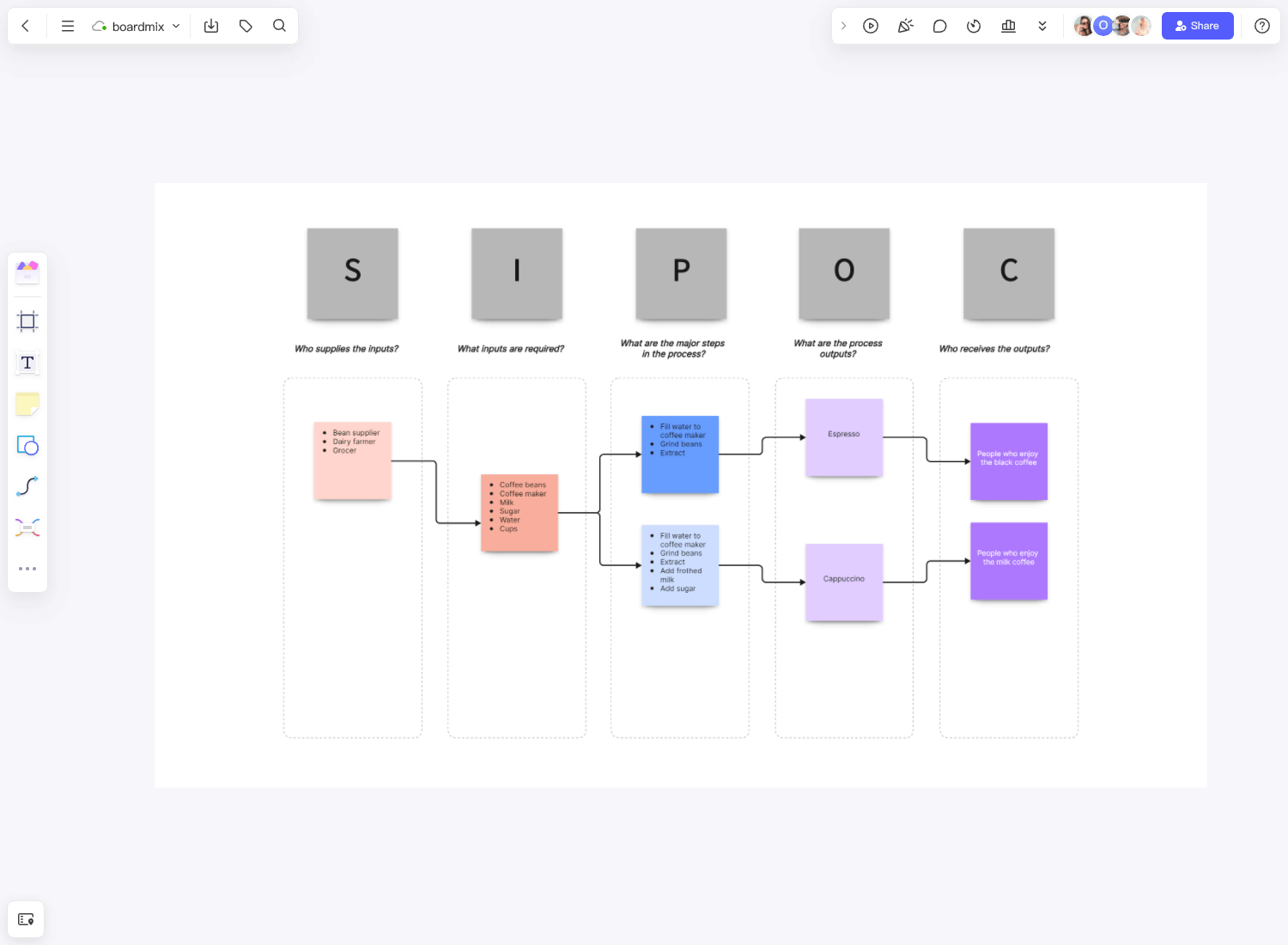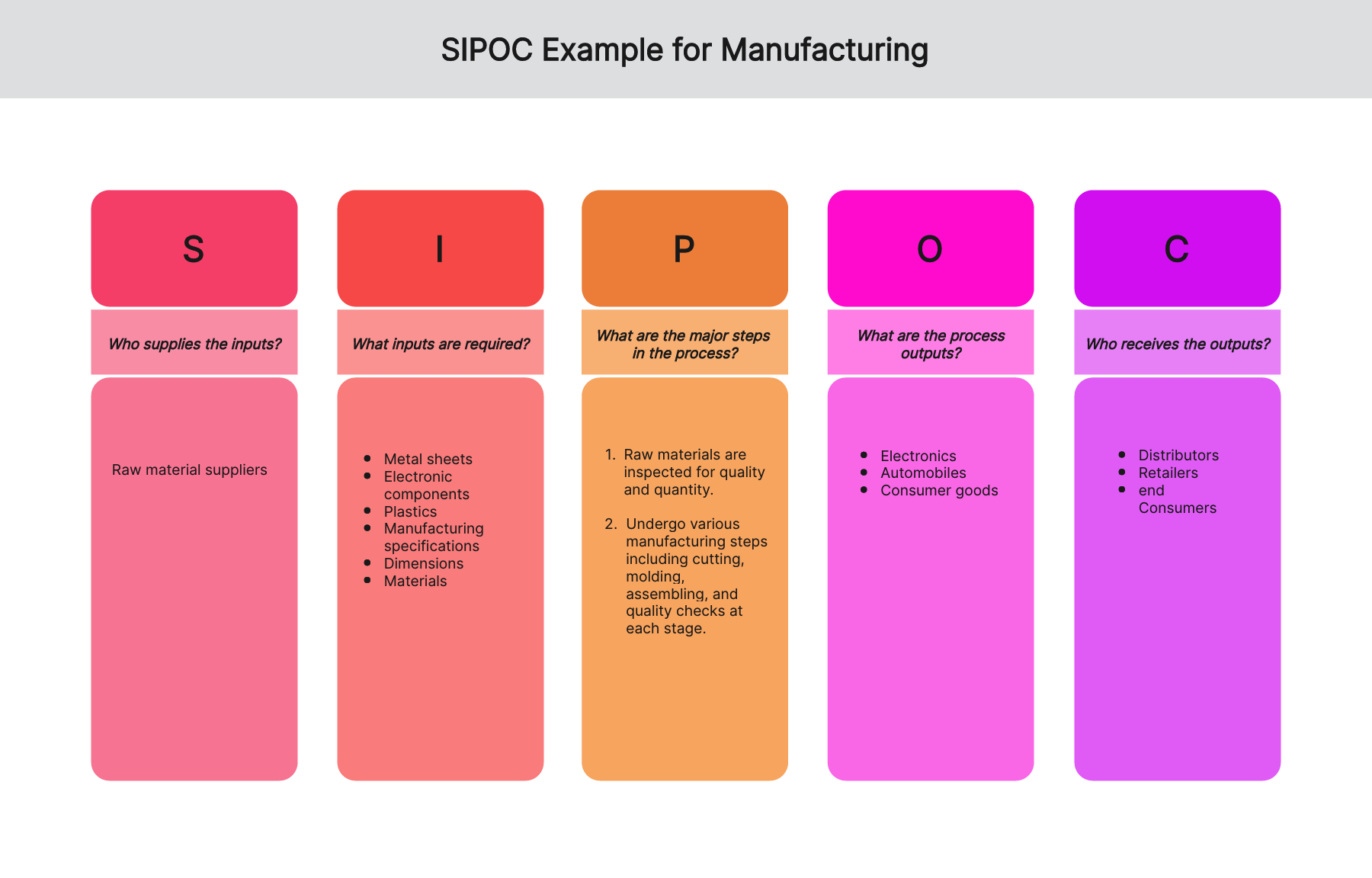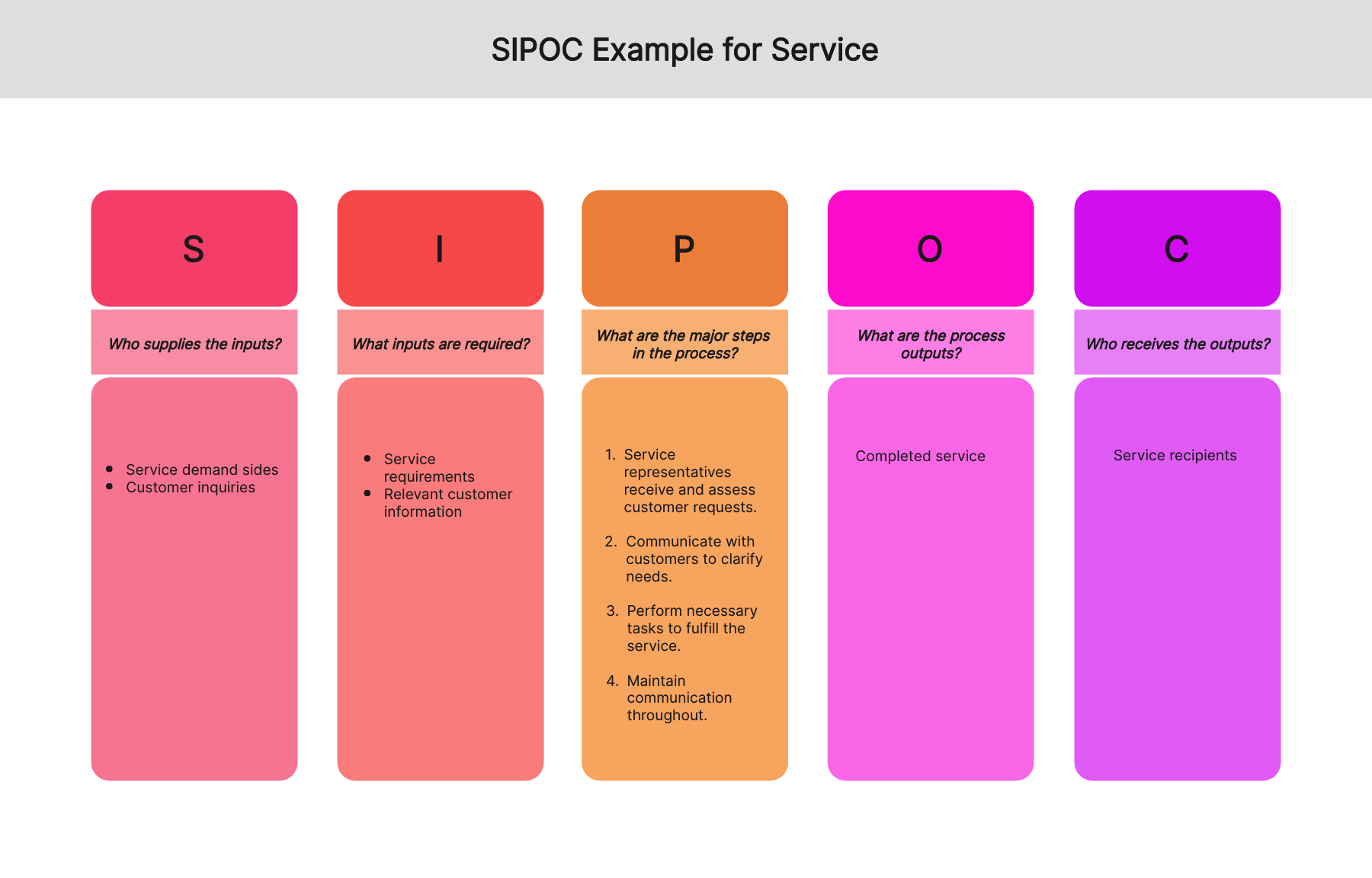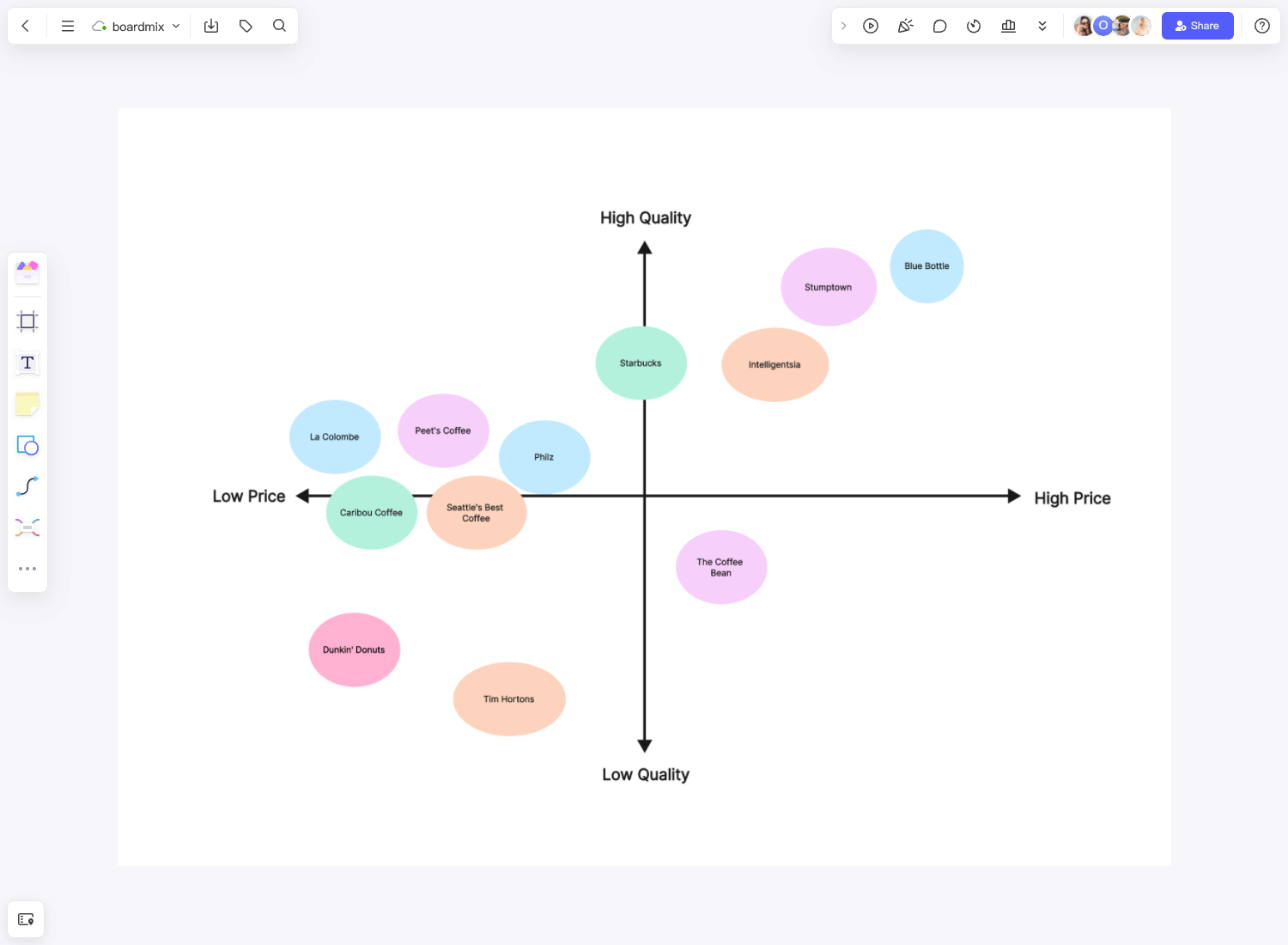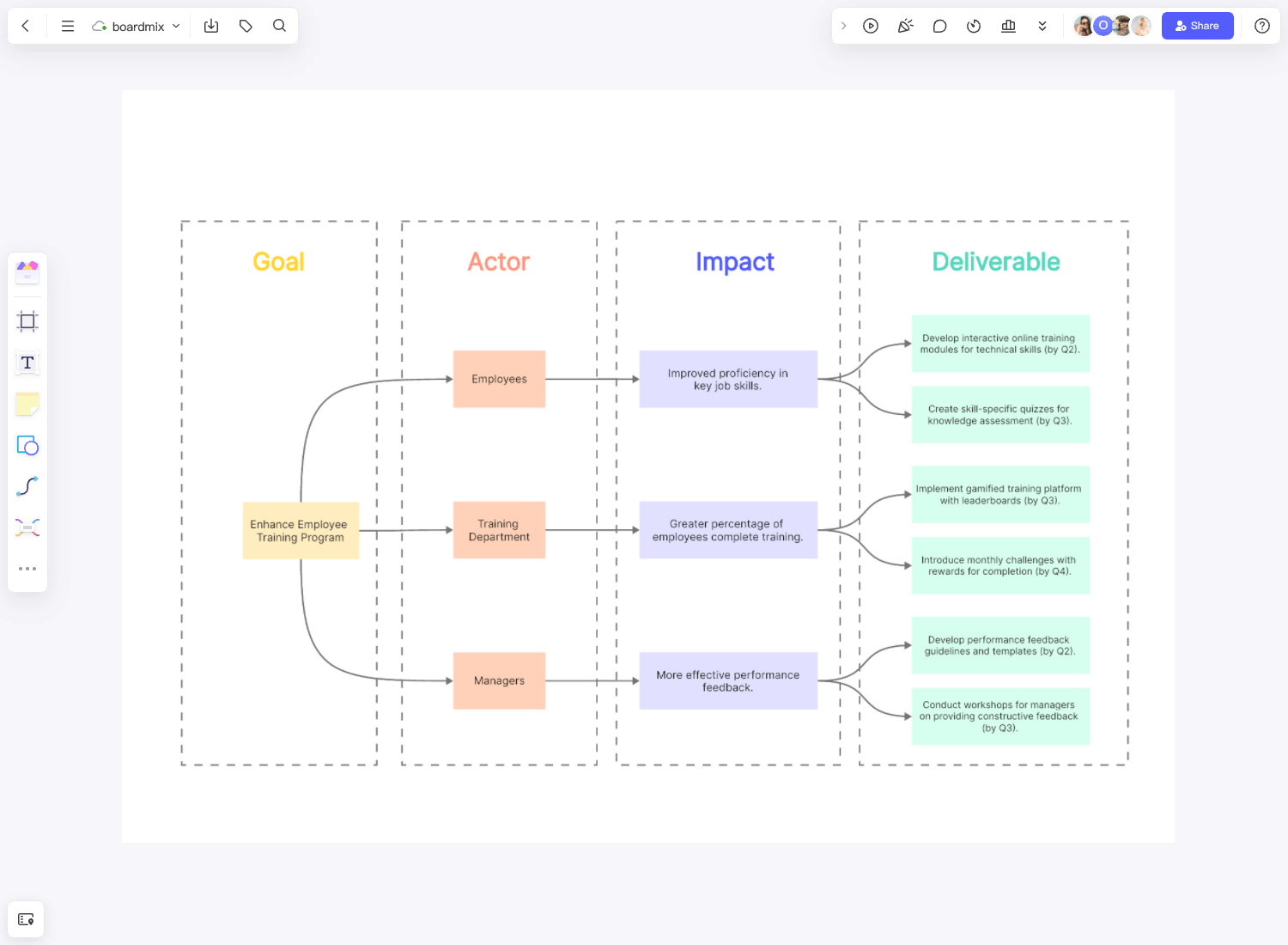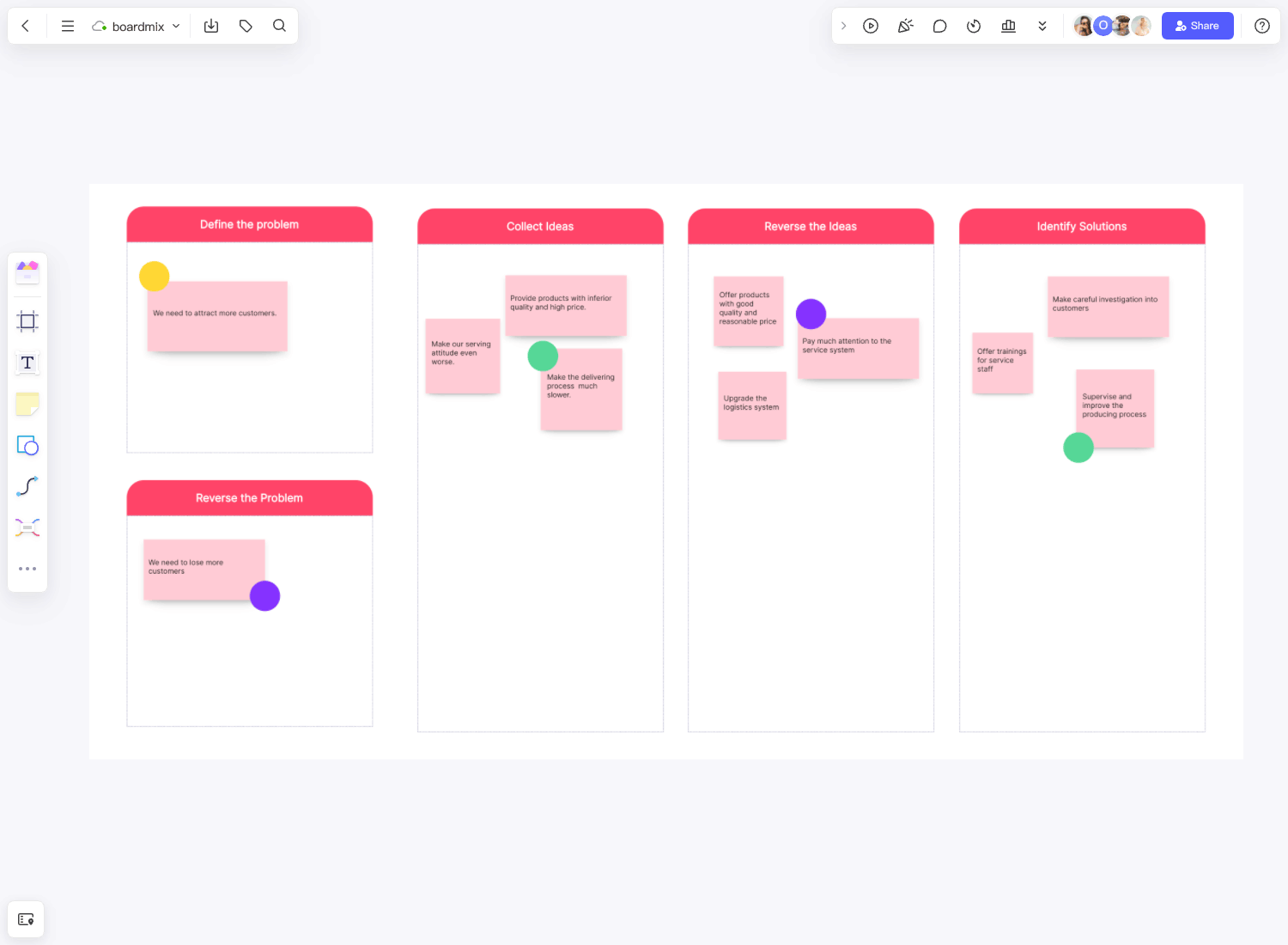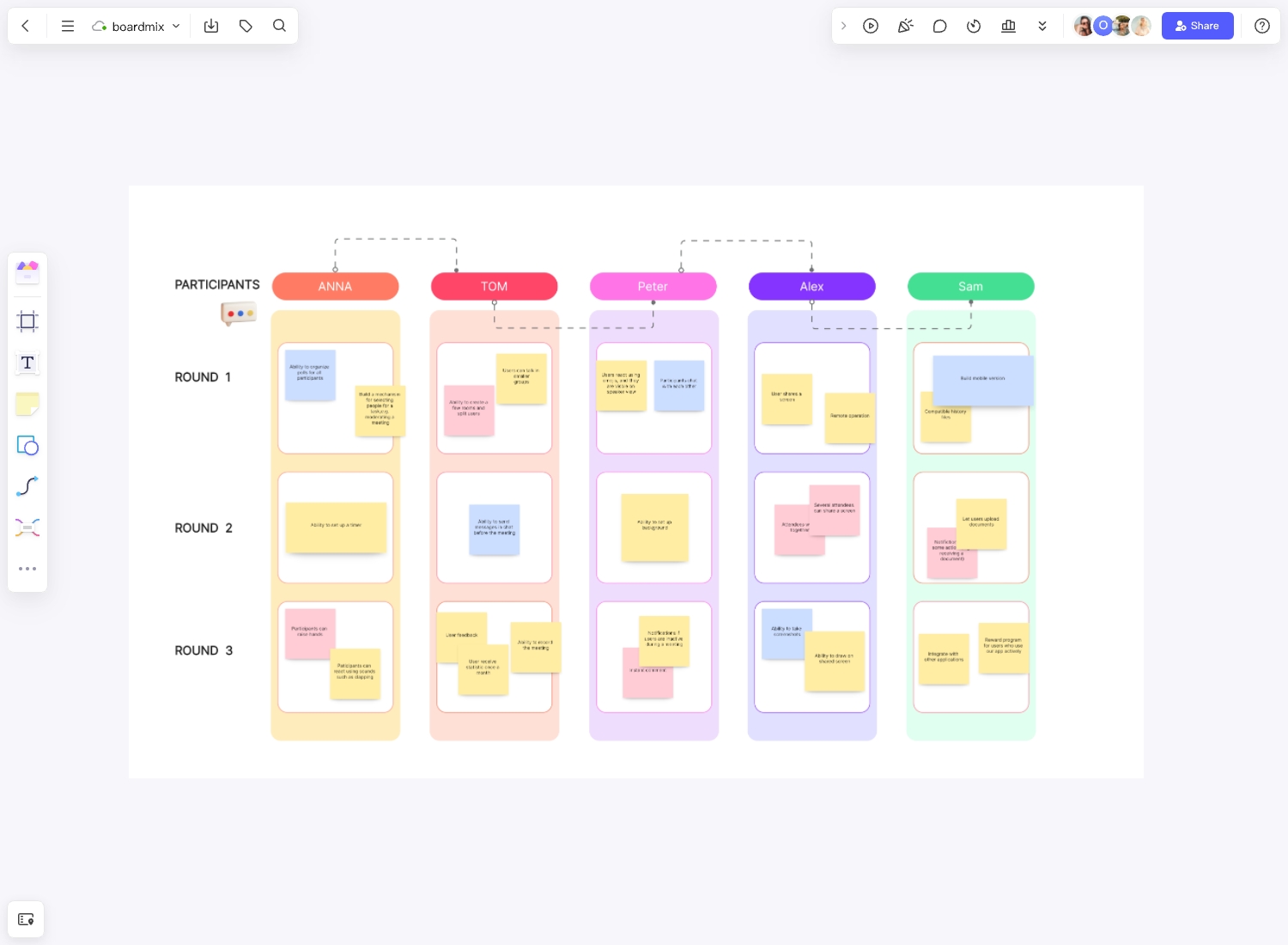Gaining insights into business processes entails grasping the intricacies of every element's execution. The prevalent method for visualizing this workflow is employing the SIPOC template. This simple yet effective diagram empowers companies to visually represent their business processes, facilitating comprehensive understanding and seamless team collaboration. Keep reading to delve deeper into this topic and unlock its potential benefits for your organization.
What is a SIPOC diagram?
A SIPOC diagram is a framework that lets you summarize the outputs and inputs of processes in an organized and stylized table. It enables companies and organizations to identify significant process elements before starting the work. The SIPOC model is helpful to companies when defining complex projects that could be better scoped.
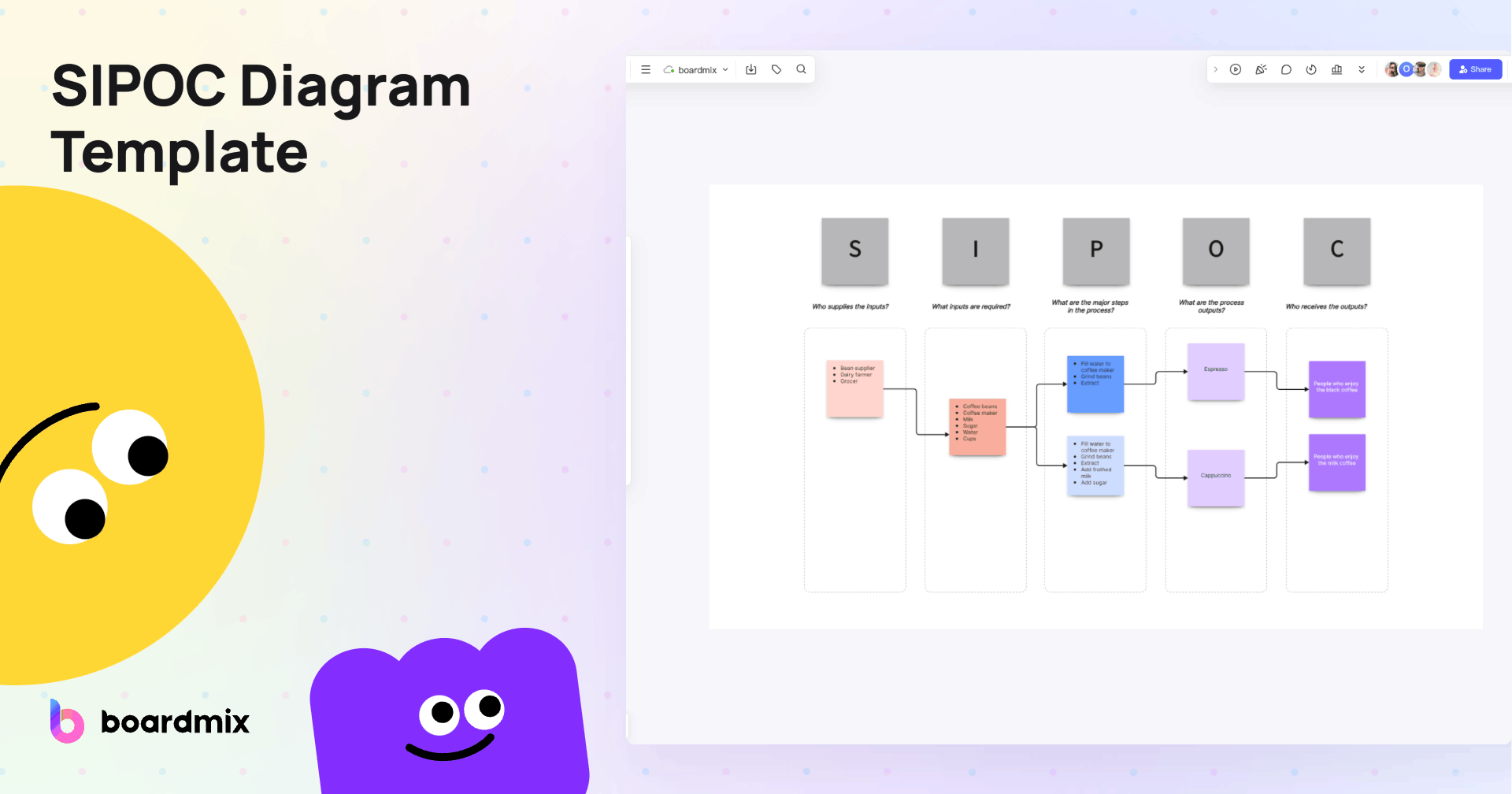
Essentially the SIPOC refers to Suppliers, Inputs, Processes, Outputs, and Customers. The diagram can help you answer the following questions:
- Who supplies the inputs within the process?
- Who are the target customers?
- What do they need??
- What specifics are placed on the category of the input?
What is included in a SIPOC template?
A SIPOC diagram generally has 5 elements a business must fill in. See the list below.
- Suppliers. In the SIPOC model, specify the supplier whose inputs directly impact your outputs. For example, you're creating a SIPOC template about 'making an egg tart.' If the supplier affects the taste aspect of your output, you must list that supplier.
- Inputs. You can strategically incorporate at least 4 to 6 essential inputs into your SIPOC diagram. These inputs serve as indispensable building blocks for seamless process execution. Your SIPOC model gains further depth and comprehensiveness as you delve into precise detailing.
- Process. Write the name of the process and provide descriptions of its vital steps. Make it in chronological order. It's essential to illustrate on your SIPOC model the beginning and end points of your process. This allows you to complete the SIPOC diagram effectively. While it's not required to go into every detail, ensure you hit the main points of the process.
- Outputs. Like the Inputs category, your SIPOC template also needs to have outputs. This section here must focus on 3 to 5 entries. Avoid writing more, as it may risk oversaturating your SIPOC diagram. On the other hand, writing down fewer than suggested will give you not much to work with as you analyze the model.
- Customers. Rarely the content of this section on your SIPOC model can diverge from the conventional notion of customers. You can designate co-workers or internal stakeholders as customers, underscoring their active engagement and influence.
Benefits of using a SIPOC template
The SIPOC model is a straightforward tool that anyone can use.
- An excellent visual tool to bring a process into focus. It's a pivotal aspect of the pre-production phase, allowing companies to proactively address potential issues before crafting the SIPOC model. This preparatory step contributes to the model's accuracy and effectiveness.
- All team members will be aligned through a SIPOC template. When you create the SIPOC model using online diagramming tools like Boradmix, you can easily share it with your team so they know what happens for every aspect of the process. It's easier to work with people who know what's going on.
- The SIPOC model highlights specific expectations of the process. The team can appreciate the process's ultimate goal and will aim towards achieving it efficiently.
SIPOC Examples in Boardmix
SIPOC Example for Manufacturing
- Supplier: Raw material suppliers.
- Input: Raw materials such as metal sheets, electronic components, and plastics; manufacturing specifications detailing design, dimensions, and materials.
- Process: Raw materials are inspected for quality and quantity. They undergo various manufacturing steps including cutting, molding, assembling, and quality checks at each stage.
- Output: Finished products such as electronics, automobiles, or consumer goods.
- Customer: Distributors and retailers who sell the manufactured products to end consumers.
SIPOC Example for Service
- Supplier: Service demand sides, customer inquiries.
- Input: Service requirements provided by customers, relevant customer information like contact details and preferences.
- Process: Service representatives receive and assess customer requests, communicate with customers to clarify needs, perform necessary tasks to fulfill the service, and maintain communication throughout.
- Output: Completed service, which could be anything from technical support, consulting, or repair services.
- Customer: Service recipients who benefit from the provided service and the solutions offered.
SIPOC Example for Construction
-Supplier: Material suppliers providing cement, steel, wood, etc.; architects providing building plans and specifications.
-Input: Detailed architectural plans, raw materials, permits, and legal documentation.
-Process: Construction involves multiple stages like site preparation, foundation laying, structural framing, installation of utilities, interior finishing, and inspections at each step.
-Output: A completed building or structure, whether it's a residential home, commercial complex, or infrastructure project.
-Customer: Building owner or occupant who will use the constructed space.
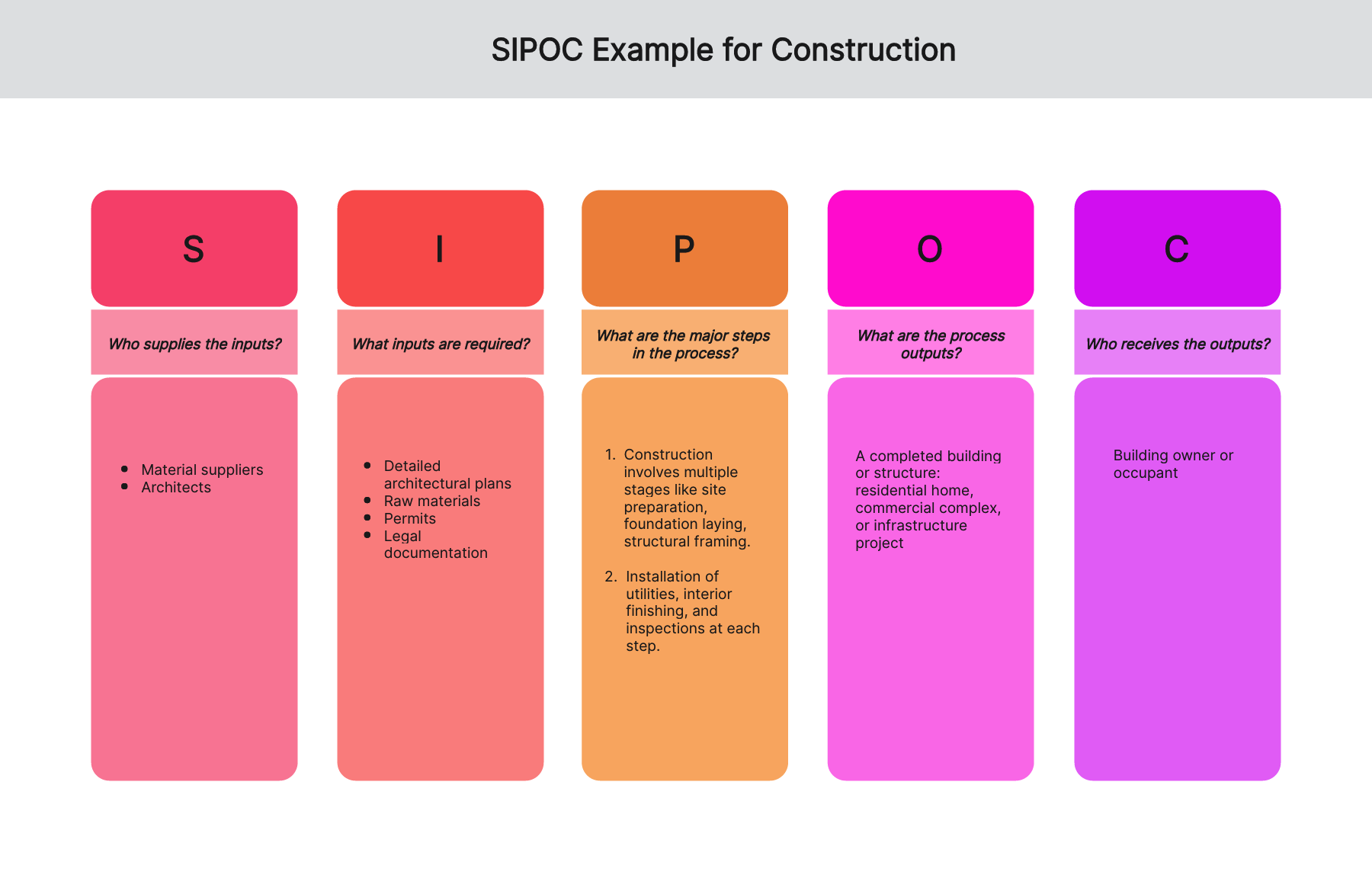
How do you conduct a SIPOC Diagram?
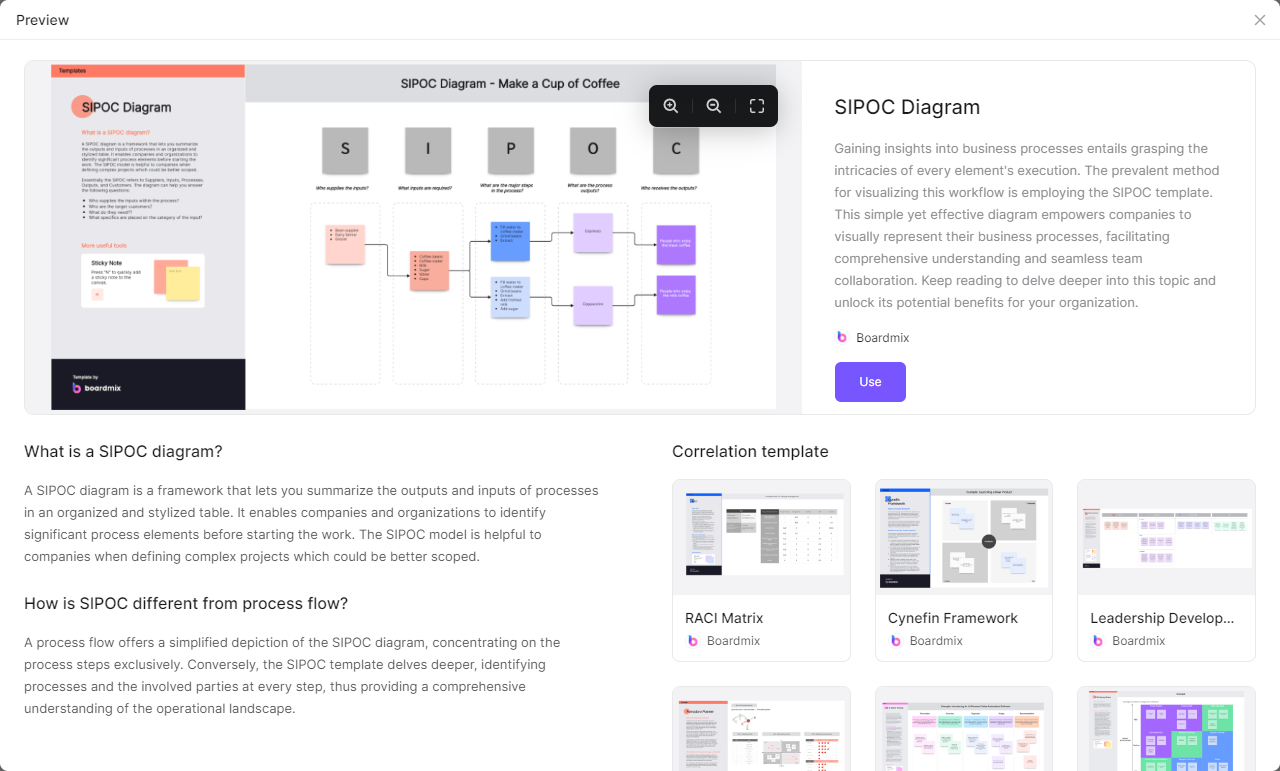
- Choose the business process for your SIPOC diagram. Ensure to assign teams or members which are essential for the process.
- Define the business process. This is generally the process overview and might include start and endpoints.
- Identify the outputs in your SIPOC template. Outputs can be anything ranging from services, products, or information.
- Determine the customers. Write on your SIPOC diagram the people who'll receive the outputs or those who will benefit from the process.
- Identify the inputs. You can write the resources needed for the process to function accordingly.
- Write on your SIPOC template the suppliers for the process. They're those who have a direct effect on the outputs.
- Share the SIPOC model with the team.
Is SIPOC a Lean or Six Sigma tool?
SIPOC is indeed a tool that is widely utilized in both Lean and Six Sigma methodologies. It's a high-level visual tool that helps map out a process at the start of a project, providing a clear overview of suppliers, inputs, processes, outputs, and customers - hence the acronym SIPOC. This tool is instrumental in identifying potential improvements and inefficiencies within a process.
In Lean methodology, SIPOC plays an essential role in eliminating waste and increasing efficiency. It helps identify non-value-added activities and processes that could be streamlined or eliminated to improve overall workflow.
On the other hand, in Six Sigma, SIPOC is used to define and refine a process by identifying potential areas of variation and inconsistency. This aids in reducing errors and improving the quality of output.
When to Use the SIPOC Template
The SIPOC template is particularly useful in several instances during a project lifecycle.
-
At the start of a project: It helps to define the process and set clear expectations. By identifying suppliers, inputs, processes, outputs, and customers, it provides an overview of the entire process before the project begins.
-
During process improvement: If you're looking to streamline or enhance an existing process, the SIPOC template can help identify areas of inefficiency or waste. It can highlight where inputs and outputs are not aligning or where suppliers and customers are experiencing disconnects.
-
When there's a change in the process: Anytime there's a significant change in how a process is performed, it's beneficial to revisit your SIPOC diagram. This ensures that everyone involved understands the new process and can identify potential impacts on inputs or outputs.
-
For training purposes: The SIPOC template is also an excellent tool for training new team members or stakeholders on a particular process. It provides a high-level view of the process in an easy-to-understand format.
How to Create the SIPOC Template in Boardmix
Creating a SIPOC diagram can help organizations visualize the entirety of a process, highlighting potential areas for improvement and ensuring stakeholders have a clear understanding of process boundaries. Here is how to do it step by step.
Step 1: Log in to Your Boardmix Account
To begin, you'll need to access your Boardmix account. Go to the Boardmix website and enter your login credentials. If you don't have an account yet, you can sign up for a new one for free.
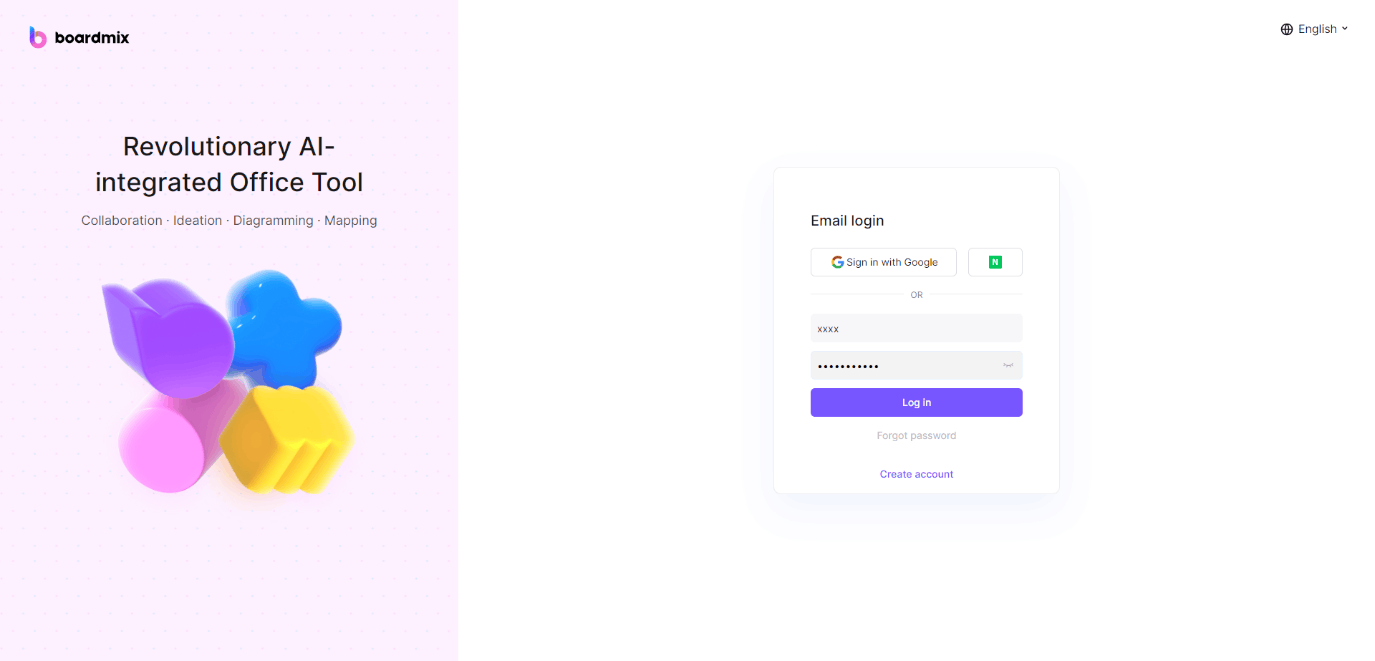
Step 2: Search and Choose SIPOC Diagram Template
Once you're logged in, head over to the Template library. You can find this in the main dashboard. Search for the SIPOC Diagram Template and click to use it for free.
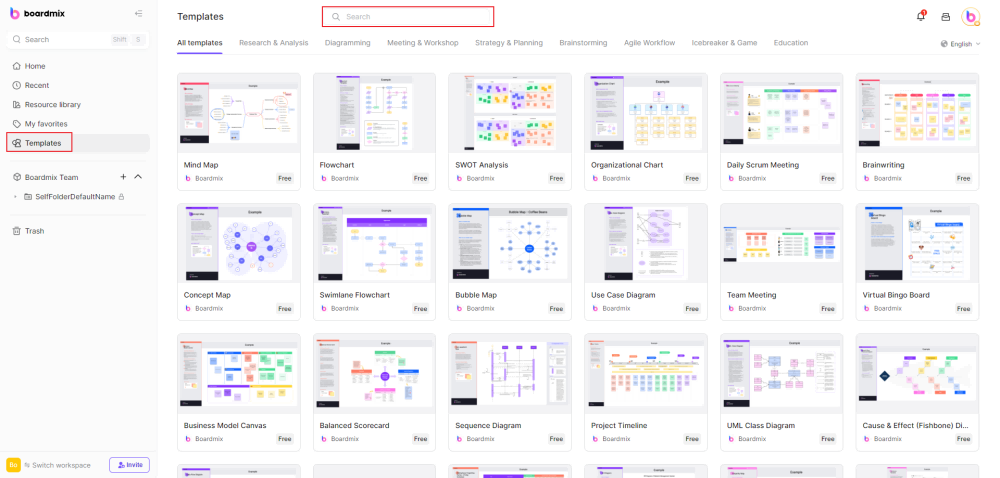
Step 3: Customize and Edit Your SIPOC Diagram
Now that you've chosen the template, it's time to customize it according to your needs. You can use shapes, lines, drawing pens, icons, and other tools to decorate your template. The SIPOC Diagram Template comes with several sections that you can fill out.
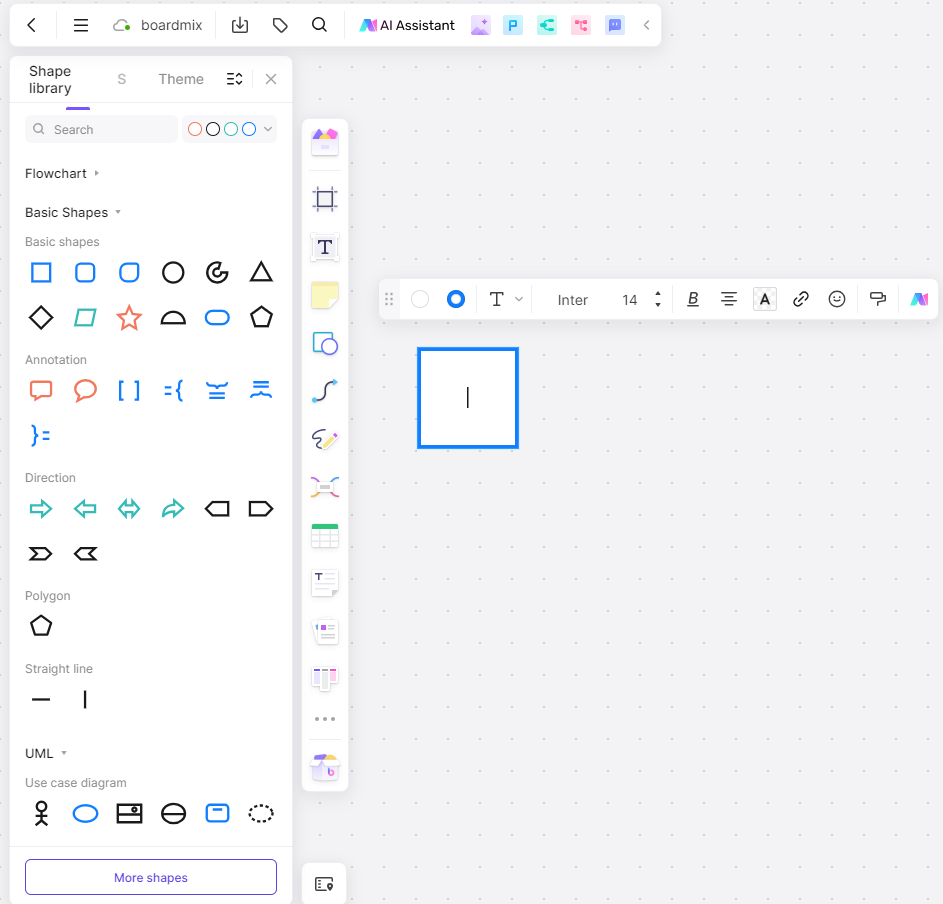
Make Your SIPOC Diagram for Free
Step 4: Save Your Work, Share and Collaborate
When customizing your SIPOC Diagram Template, Boardmix autosaves your progress, but it's good practice to manually save before exiting.
Next, share your activity plan to collaborate with your team. Click on the "Share" button on the top right corner of the screen, copy the sharing link, and send it to anyone whom you want to collaborate with. People can join this file to edit and collaborate on this file in real time by clicking this sharing link. We encourage your team to leave comments, suggest edits, or ask questions online so you can adjust it in time.
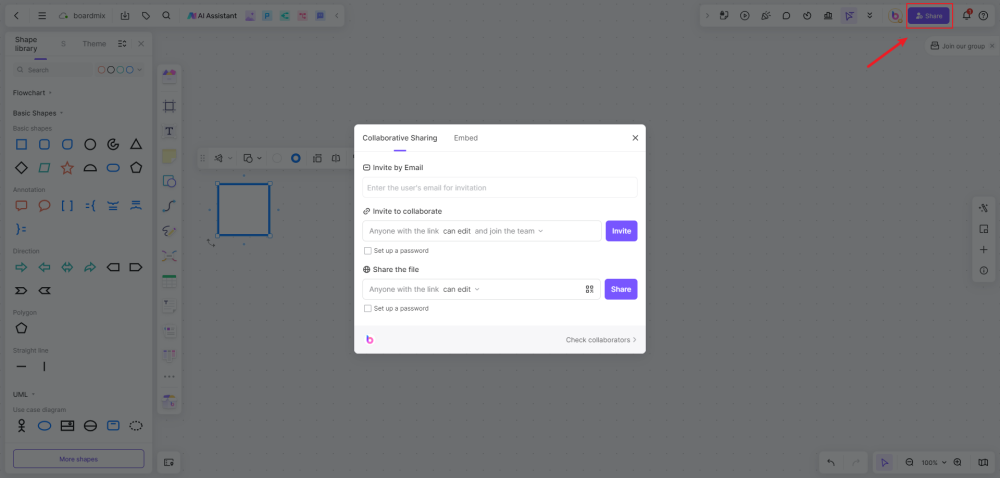
FAQ about the SIPOC diagram
How is SIPOC different from process flow?
A process flow offers a simplified depiction of the SIPOC diagram, concentrating on the process steps exclusively. Conversely, the SIPOC template delves deeper, identifying processes and the involved parties at every step, thus providing a comprehensive understanding of the operational landscape.







